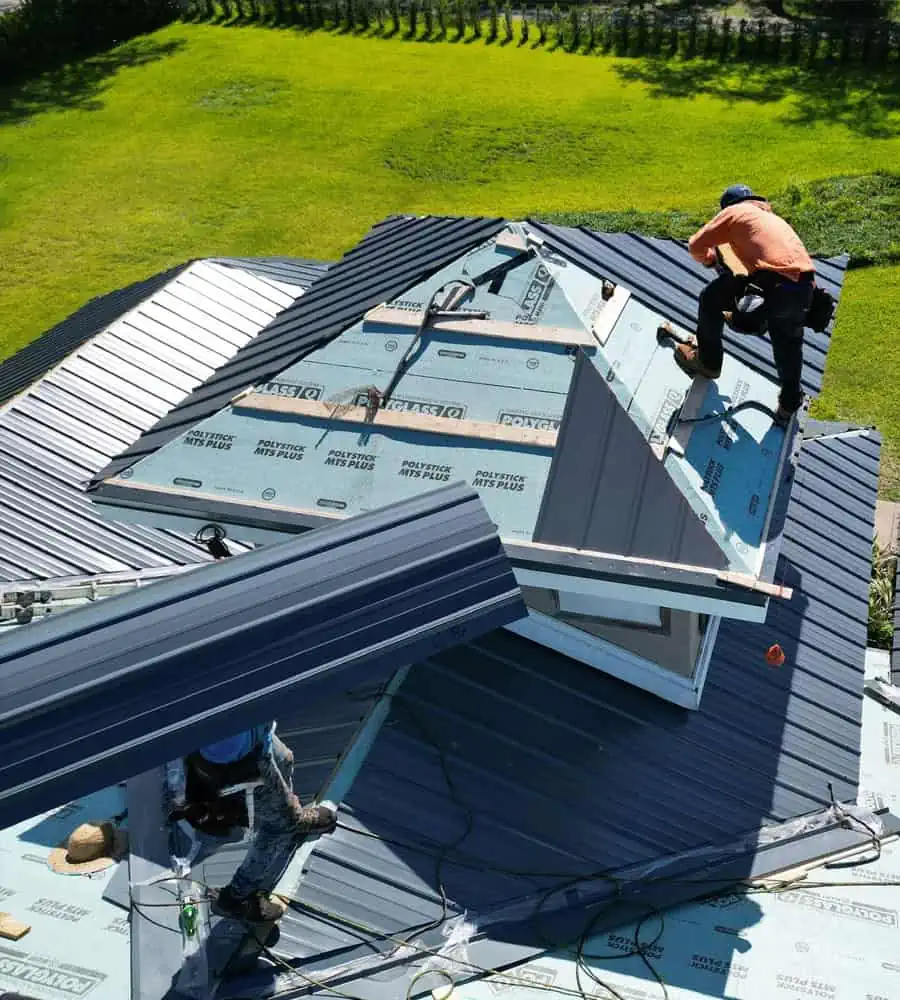Experienced and Trusted Northeast Ohio Roofing Contractors for each Project
A Comprehensive Overview to the Setup Process of a Skylight Roofing
The setup of a skylight roof covering is a multifaceted process that calls for meticulous preparation and implementation to guarantee optimal performance and aesthetic appeal. This guide will certainly detail the important steps entailed, from selecting the ideal skylight type to the necessary devices and products needed for a successful installment. Comprehending the nuances of architectural stability and waterproofing is paramount, as these factors directly affect the durability of your skylight. As we check out each phase, it becomes clear that attention to detail is not just helpful however vital for achieving a smooth assimilation of natural light into your space.

Comprehending Skylight Types
When thinking about a skylight setup, it is crucial to comprehend the numerous types readily available, each developed to meet various visual and functional requirements. One of the most common kinds of skylights consist of taken care of, aired vent, tubular, and operable designs.
Fixed skylights are non-opening units that serve primarily to offer natural light and enhance interior spaces. Skylight Installation in Cleveland Heights. They are perfect for areas where air flow is not a concern. Vented skylights, on the other hand, feature a system that enables them to open, promoting air movement and decreasing moisture degrees. These are particularly advantageous in washrooms or kitchen areas.
Tubular skylights are compact and made to capture sunshine through a little dome on the roof covering, funneling it down a reflective tube right into the space. This kind is valuable for smaller areas or spaces that call for added light without compromising ceiling elevation. Operable skylights combine both natural light and air flow, making them functional in numerous atmospheres.
Each skylight type provides special benefits, and the selection depends on variables such as the planned use the area, neighborhood climate, and architectural design. Hence, comprehending these alternatives is important for making an informed choice.
Planning For Installment
Choosing the proper sort of skylight is just the beginning; ample prep work for setup is important for making sure an effective job. Prior to initiating the installation process, it is critical to evaluate the architectural integrity of the roofing system where the skylight will be installed. This involves checking for any kind of signs of damage, such as rot or leakages, which may compromise the setup and lead to future issues.
Next, it is necessary to prepare the place of the skylight meticulously. Consider elements such as sunshine exposure, prospective obstructions (like trees or bordering structures), and the total appearances of the room. Marking the location plainly will help in envisioning the outcome and help avoid mistakes throughout installation.
Additionally, reviewing regional building regulations and getting essential licenses is vital to guarantee conformity with laws. This step will assist prevent potential fines and make certain the security and validity of the installation.
Devices and Products Needed
A successful skylight installation requires a specific collection of materials and devices to guarantee accuracy and effectiveness throughout the process. Essential devices consist of a measuring tape, level, circular saw, and energy knife, which are essential for exact dimensions and reducing. A drill and appropriate drill little bits are required for developing holes for placing brackets, while a hammer and screws or nails are required for safeguarding the skylight in position.
The skylight unit itself need to be picked based on the size and type appropriate for the roof covering. Roofing cement and caulking are likewise called for to provide additional waterproofing around the skylight edges.
Safety and security tools, such as gloves, goggles, and a hard hat, ought to not be forgotten to protect against potential risks throughout the installment. Tarps or drop fabrics can be useful to capture particles and secure the inside of the space below. Collectively, these materials and tools lay the foundation for a successful skylight installation.
Step-by-Step Installment Process
Efficiently mounting a skylight involves a systematic anonymous method that guarantees both capability and visual appeals. Begin by marking the wanted area on the ceiling, ensuring it aligns with the structural parts of the roof. Next off, reduced an opening that represents the dimensions of the skylight go to website frame, taking care to stay clear of any kind of electric wiring or plumbing.
Once the opening is prepared, install flashing around the border to draw away water away from the skylight. This is vital for stopping leaks. Position the skylight right into the opening, guaranteeing it sits flush with the roofline. Secure it in position making use of nails or screws, according to the producer's specifications.
Following, apply roof covering cement along the sides of the skylight and around the blinking to create a leak-proof seal. Properly inspecting the skylight makes certain resilience and boosts its visual appeal, supplying a beautiful source of all-natural light for years to come.
Settling and Maintaining Your Skylight
After the setup of your skylight is total, it's vital to complete the procedure by making certain that all finishing touches are used and proper maintenance routines are developed. Begin by evaluating the exterior and interior seals for any spaces or inconsistencies that could cause leakages. Correct securing is crucial for the longevity of your skylight.
Next, clean the glass surface area with a mild, non-abrasive cleaner to keep quality and enhance natural light penetration. Avoid harsh chemicals that might damage the framework or seals. Frequently look for particles accumulation around the skylight, as this can result in drain issues and may require periodic cleansing.
Establish an upkeep routine, ideally every six months, to assess the condition of the skylight. Look for signs of wear, including wear and tear of seals or frame materials. If you notice any concerns, resolve them without delay to protect against more damages.
Final Thought

The installation of a skylight roof is a diverse process that needs precise planning and implementation to make sure optimum useful source efficiency and visual charm.Choosing the suitable type of skylight is just the start; ample prep work for installment is crucial for making sure a successful project.A successful skylight installment requires a particular set of products and devices to make certain accuracy and effectiveness throughout the process.After the installment of your skylight is full, it's crucial to cover up the process by guaranteeing that all finishing touches are applied and correct upkeep routines are developed. Making sure structural integrity, correct flashing installation, and a water tight seal are important for the skylight's performance and long life.